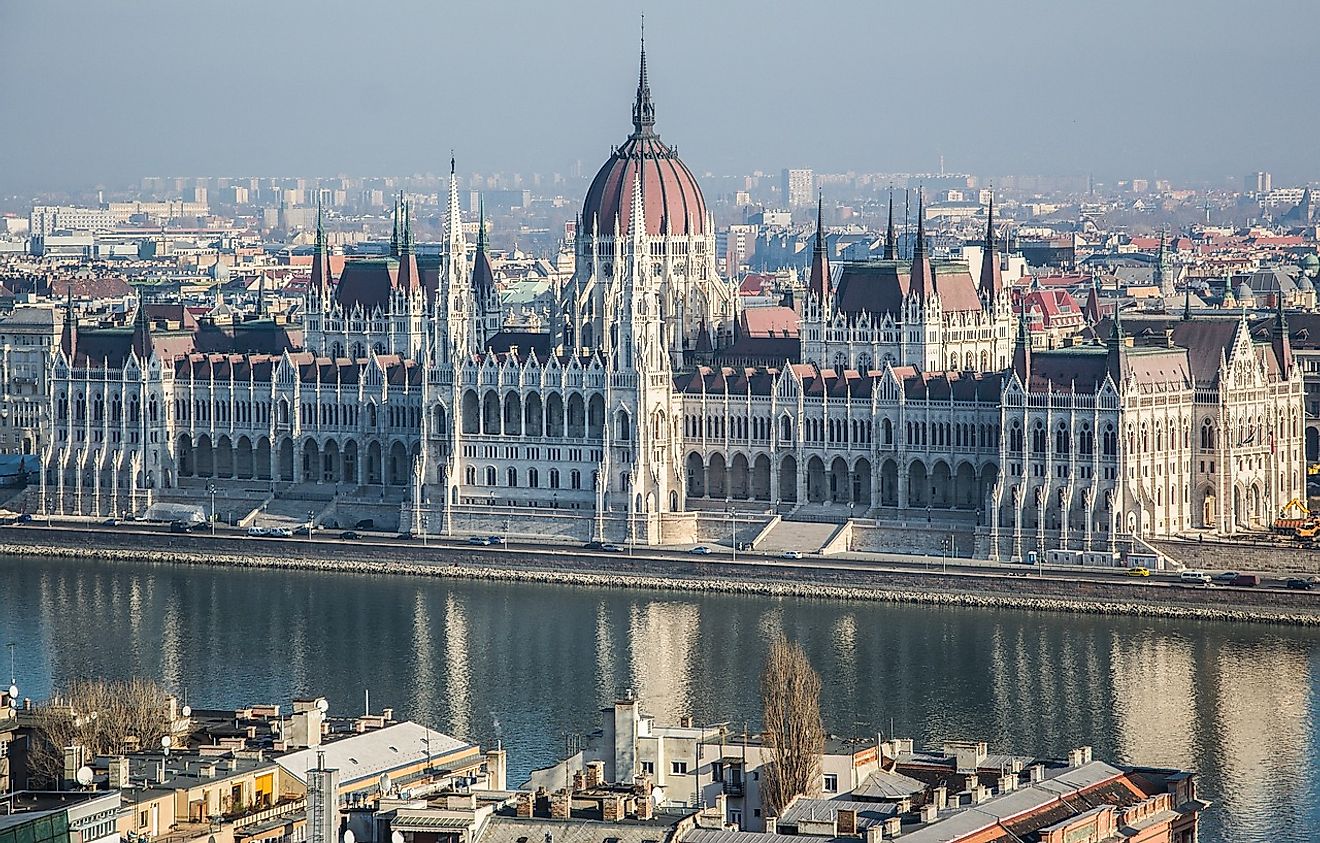Hungarian National Parliament - Unique Places around the World

5. Description
The Hungarian Parliament is located in the capital city of Budapest and is the third largest parliament building in the world. Construction on the building started in 1885 and lasted until 1902. The beautiful dome structure on the building is 315 feet (96 meters) tall and the building contains 691 rooms. The inside of the building is just as impressive as the exterior, with intricate staircases and stunning ceiling paintings created by Hungarian artists. The coronation crown of Saint Stephen I, the first King of Hungary, is displayed in the parliament's Copula Hall under the protection of a rotating national guard stationed in the room as well.
4. Tourism
There are organized guided tours which can take visitors around the parliament and inside as well. Since lines tend to be long, it is possible to buy a ticket online and avoid the hassle of waiting. The building is open from 8 am until 6 pm, and tours are presented in many languages throughout the day. Tours themselves last roughly 50 minutes, and are usually times so that guests can watch the changing of the guard in the same room as Saint Stephen's crown. Getting to the parliament is simple, as it is located near the center of the city by the waterside of the eastern Pest half of Budapest. The Kossuth Lajos tér metro stop, locating on the "red" metro line 2, is located right next to the parliament building, and there are also trams and trolleybuses available. Budapest, the Hungarian capital and home to the parliament, is also a generally accessible city for travelers from all over, as it is located right in the center of continental Europe. The bustling neighboring cities of Vienna, Prague, and Timisoara are mere hours away by train, and a variety of international flights are available via Budapest's Liszt Ferenc Airport.
3. Uniqueness
The Hungarian Parliament is unique not only because of its size but also because of the many design elements used within the building. The exterior of the building uses elements from the Gothic period while its interior uses both Renaissance and Baroque styles. The building has also undergone several changes throughout its history. For example, under communism the parliament had a red star on top. It also faces the Danube river, which means that the building can be viewed from river cruises for a beautiful view of the entire structure. At night, its interior even lights up.
2. History
Construction on the building began in 1885, but the actual planning started five years earlier. Nineteen plans were submitted and the winning design was drawn up by the architect Imre Steindl. The other top designs were used to build the Museum of Ethnography and Ministry of Agriculture buildings. The parliament was built during the reign of the Austro-Hungarian empire, considered to be an overall prosperous time for Budapest. The Dome Hall and main entrance were completed first, so that the building could be inaugurated to celebrate and host the 1000th year birthday celebration of Hungary in 1896, when the confederation of Hungarian tribes (or magyar törzsek) led by Árpád settled the Carpathian Basin in 896, founding the medieval Principality of Hungary. At last, in 1902 the Hungarian Parliament building was ready for use.
1. Threats
The parliament building is made out of limestone, which is very porous, so pollution from the air is constantly causing damage and this requires frequent work to maintain the structure. Restoration work has been going on for over twenty-four years to battle the damage that time and weather is constantly creating. In general, the building does not face many threats and is constantly watched by the national guard to protect the crown jewels. Government meetings are held within the building, so guided tours are also a security measure to keep tourists from wandering into prohibited areas.







